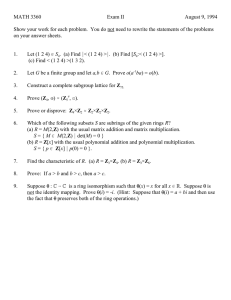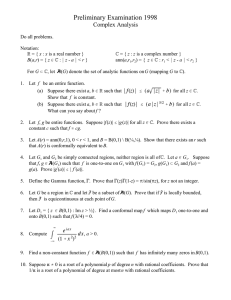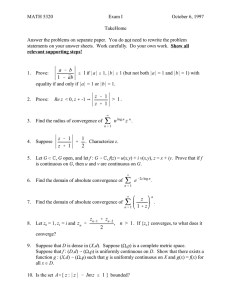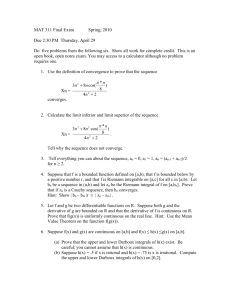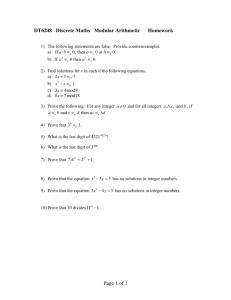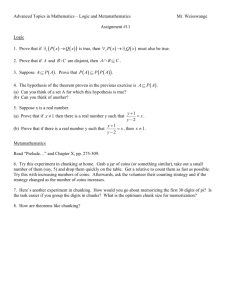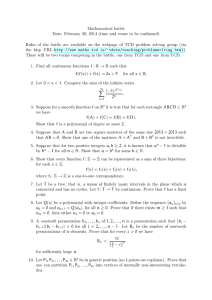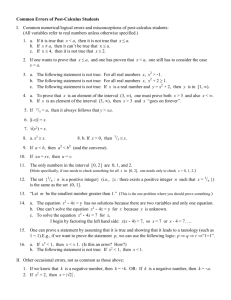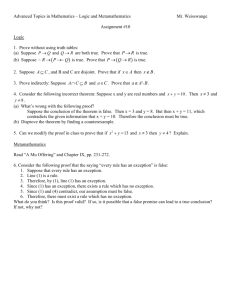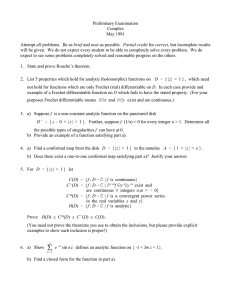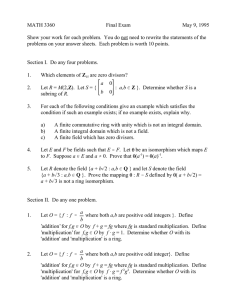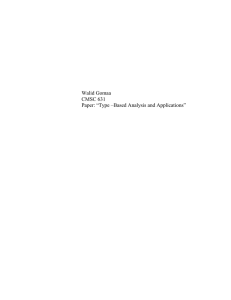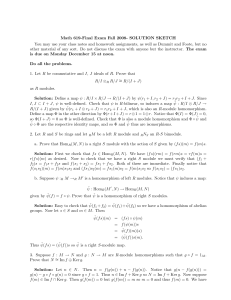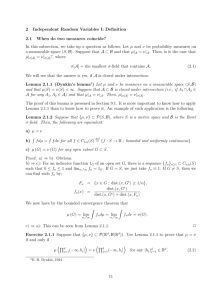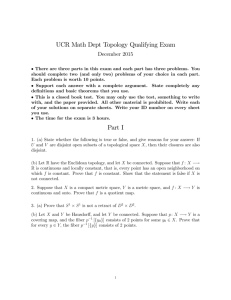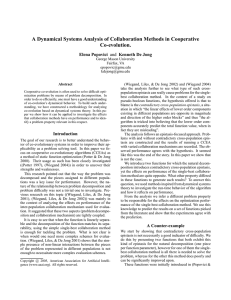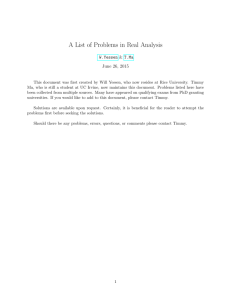Section 3.5 Question 12 (a) Prove that for all real numbers a and b
advertisement
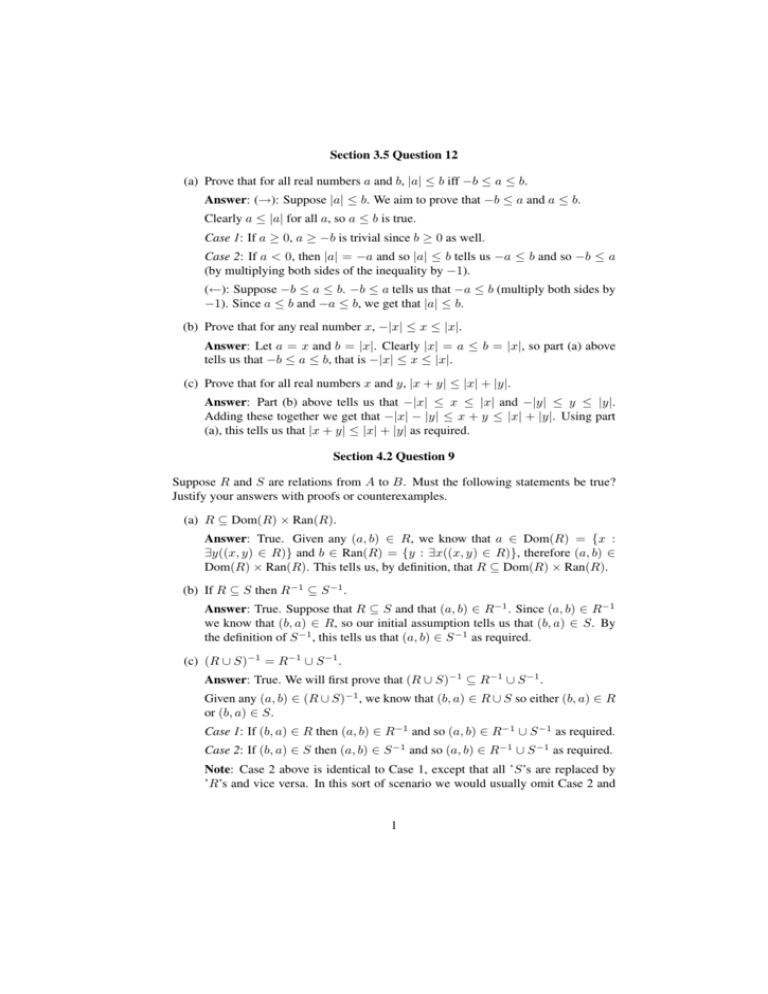
Section 3.5 Question 12
(a) Prove that for all real numbers a and b, |a| ≤ b iff −b ≤ a ≤ b.
Answer: (→): Suppose |a| ≤ b. We aim to prove that −b ≤ a and a ≤ b.
Clearly a ≤ |a| for all a, so a ≤ b is true.
Case 1: If a ≥ 0, a ≥ −b is trivial since b ≥ 0 as well.
Case 2: If a < 0, then |a| = −a and so |a| ≤ b tells us −a ≤ b and so −b ≤ a
(by multiplying both sides of the inequality by −1).
(←): Suppose −b ≤ a ≤ b. −b ≤ a tells us that −a ≤ b (multiply both sides by
−1). Since a ≤ b and −a ≤ b, we get that |a| ≤ b.
(b) Prove that for any real number x, −|x| ≤ x ≤ |x|.
Answer: Let a = x and b = |x|. Clearly |x| = a ≤ b = |x|, so part (a) above
tells us that −b ≤ a ≤ b, that is −|x| ≤ x ≤ |x|.
(c) Prove that for all real numbers x and y, |x + y| ≤ |x| + |y|.
Answer: Part (b) above tells us that −|x| ≤ x ≤ |x| and −|y| ≤ y ≤ |y|.
Adding these together we get that −|x| − |y| ≤ x + y ≤ |x| + |y|. Using part
(a), this tells us that |x + y| ≤ |x| + |y| as required.
Section 4.2 Question 9
Suppose R and S are relations from A to B. Must the following statements be true?
Justify your answers with proofs or counterexamples.
(a) R ⊆ Dom(R) × Ran(R).
Answer: True. Given any (a, b) ∈ R, we know that a ∈ Dom(R) = {x :
∃y((x, y) ∈ R)} and b ∈ Ran(R) = {y : ∃x((x, y) ∈ R)}, therefore (a, b) ∈
Dom(R) × Ran(R). This tells us, by definition, that R ⊆ Dom(R) × Ran(R).
(b) If R ⊆ S then R−1 ⊆ S −1 .
Answer: True. Suppose that R ⊆ S and that (a, b) ∈ R−1 . Since (a, b) ∈ R−1
we know that (b, a) ∈ R, so our initial assumption tells us that (b, a) ∈ S. By
the definition of S −1 , this tells us that (a, b) ∈ S −1 as required.
(c) (R ∪ S)−1 = R−1 ∪ S −1 .
Answer: True. We will first prove that (R ∪ S)−1 ⊆ R−1 ∪ S −1 .
Given any (a, b) ∈ (R ∪ S)−1 , we know that (b, a) ∈ R ∪ S so either (b, a) ∈ R
or (b, a) ∈ S.
Case 1: If (b, a) ∈ R then (a, b) ∈ R−1 and so (a, b) ∈ R−1 ∪ S −1 as required.
Case 2: If (b, a) ∈ S then (a, b) ∈ S −1 and so (a, b) ∈ R−1 ∪ S −1 as required.
Note: Case 2 above is identical to Case 1, except that all ’S’s are replaced by
’R’s and vice versa. In this sort of scenario we would usually omit Case 2 and
1
simply say that Case 1 is sufficient to prove our claim by the symmetry of the
argument.
Next we must prove that R−1 ∪ S −1 ⊆ (R ∪ S)−1 .
Clearly R ⊆ R ∪ S and S ⊆ R ∪ S. Using part (b) above, this tells us that
R−1 ⊆ (R ∪ S)−1 and S −1 ⊆ (R ∪ S)−1 , therefore R−1 ∪ S −1 ⊆ (R ∪ S)−1
as required.
Since (R ∪ S)−1 ⊆ R−1 ∪ S −1 and R−1 ∪ S −1 ⊆ (R ∪ S)−1 , we conclude that
(R ∪ S)−1 = R−1 ∪ S −1 .
2
